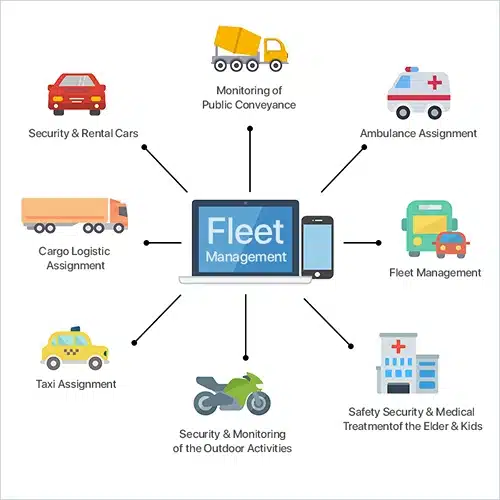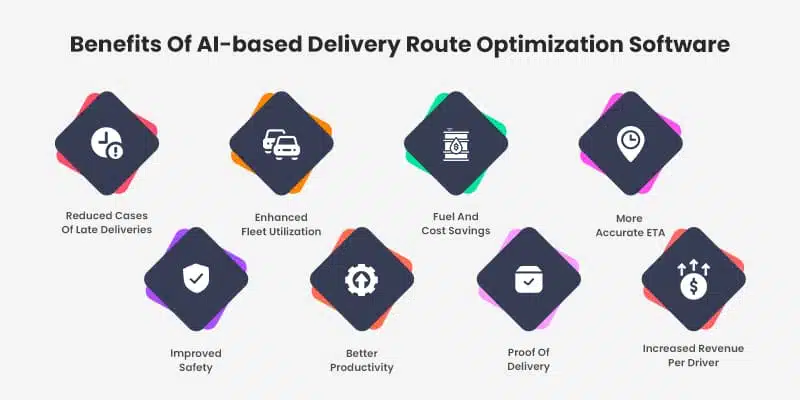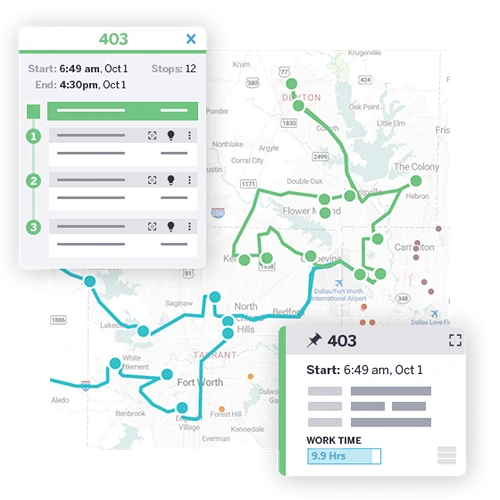
The field of fleet management has always been difficult and exacting. Complying with policies, planning efficient routes, managing vehicle maintenance and fuel expenses, and keeping everything in order require a great deal of work. However, things are changing quickly. The U.S. fleet management market, valued at $19.47 billion in 2020, is projected to grow to $52.5 billion by 2030, reflecting a compound annual growth rate (CAGR) of 10.6%. The increase in value further demonstrates the growing dependence on modern technologies to optimize performance and reduce expenses.
In this article, we cover how artificial intelligence, along with web data, is changing fleet management, the value of fleet data in operational optimization, and how fleet data analytics can be leveraged to stay ahead of the competition.
How AI and Web Data Are Transforming Fleet Management

Image Source: Cakiweb
The field of transportation and logistics is rapidly changing due to the influence of real-time web data and AI. Fleet managers no longer have to depend on outdated reports or rough estimates to make decisions. Instead, they have real-time insights that are intended to enhance the performance of fleets and minimize costs, turning fleet optimization into an ongoing process.
1. AI-Powered Predictive Maintenance
With regards to costs incurred in fleet management, perhaps the most detrimental is vehicle maintenance. Unanticipated breakdowns incur not only costly repairs but also delays in fleet delivery schedules. AI-driven predictive maintenance helps fleet operators overcome these issues.
Using data from the vehicle’s sensors, AI is able to sift through fleet data and diagnose failure warning signs. For instance, an engine running at an abnormal temperature or irregularized tire pressure can serve as an indicator. Instead of allowing vehicles to undergo breakdowns, fleet managers are now able to maintain vehicles before issues arise, which ends up reducing emergency repairs.
2. Route Optimization with AI and Real-Time Web Data

Image Source: Matellio
Fuel expenses are another important consideration for fleet operators. Increased fuel utilization, excess vehicle wear and tear, and longer trips are all common issues caused by poor route planning. AI-powered route optimization tools can analyze fleet data in real time, enabling accurate route determination.
AI has the ability to change routes in real time based on web data and things like traffic conditions, weather, or road closures. For example, if there is a major jam on the highway, the system can reroute drivers to cheaper and quicker routes. This improvement in delivery efficiency drastically enhances client satisfaction.
3. AI-Driven Driver Behavior Monitoring
The value of a vehicle cannot be solely judged based on the make and model, it is equally determined by how it is driven. Excessive idling, rapid acceleration, and harsh braking all lead to increased fuel and maintenance costs. AI-powered fleet monitoring systems assess driver behavior and provide real-time guidance.
Through fleet data management tools, fleet managers are able to monitor individual drivers’ risk skills and train them to alter their driving patterns. This not only reduces fuel expenses but also lessens the occurrence of accidents, which decline insurance costs, enhance vehicle life, and improve overall safety.
Types of Fleet Data and Their Role in Cost Optimization
There are numerous varieties of fleet data, and each aids in the optimization of operations, cost reduction, and efficiency improvement. Companies that utilize different fleet data types stand to benefit from significant and informative strategic changes.
1. Vehicle Health and Maintenance Data
The diagnostic systems and IoT sensors in fleet vehicles provide detailed fleet data pertaining to the engine, tire, battery, and brake mechanics. A fleet manager can analyze such data to plan and perform scheduled maintenance ahead of time, avoiding contrived breakdowns and unplanned downtimes.
2. Fuel Consumption Data
Driving is an integral part of every business, and so is fuel consumption, which is usually the largest aspect of operational costs. AI-powered fleet data analytics tools can track and analyze a vehicle’s fuel usage relative to others in the fleet, training fleet managers to better manage driver habits, suboptimal routing, and needless fuel spending.
3. Driver Behavior Data
Monitoring the drivers of the fleet vehicles is essential in driving the maintenance and fuel dimming costs down. Fleet monitoring systems gather data on driving habits, including but not limited to reckless acceleration/braking, speed, idling, and time spent behind the steering wheel. Companies should utilize the data gathered from these systems to encourage safe driving habits.
4. Route and Traffic Data

Image Source: Trimble Transportation
Web data on traffic, road obstructions, and weather updates help make better routing choices. AI tools for navigation adjust routes in real-time to lessen hold-ups, maximize fuel use, and deliver goods on schedule.
5. Compliance and Regulatory Data
Fleet operators must meet safety requirements, vehicle emissions, and hours of service (HOS) boundaries. Automated compliance management, together with digital logs, helps guarantee legal compliance, avoiding punitive fines or legal actions.
6. Cargo and Load Data
Logistics businesses need to monitor the condition of the cargo as much as the movement of the vehicles. In-transit monitoring using sensors for temperature, humidity, and vibration ensures the safe transport of perishable and fragile items. This minimizes spoilage and damage of goods and reduces financial losses.





















































